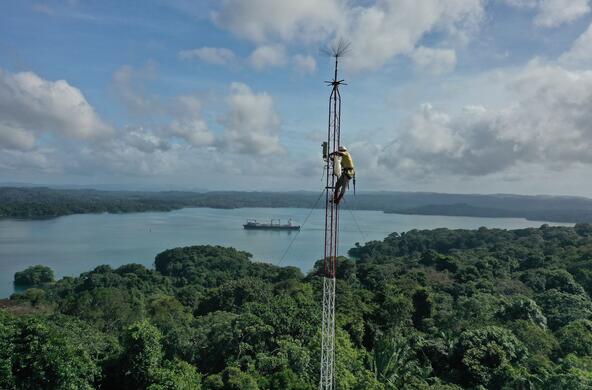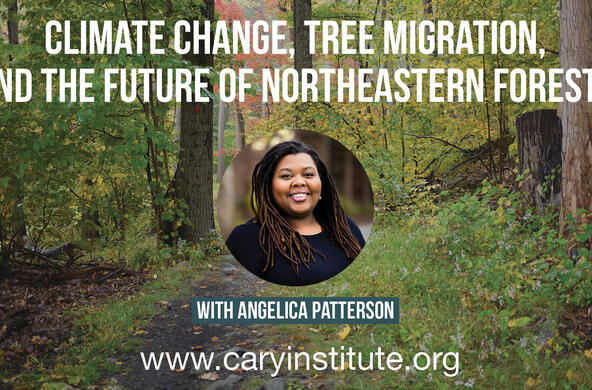In recent months, we have heard a lot about inequality—in race, gender and taxation. Traditionally, inequality has been related to the distribution of income or accumulated wealth in human society—a quantitative metric that can reflect the broader inequalities in other aspects of society. About 100 years ago, the Italian sociologist Corrado Gini developed an index, now known as the Gini Index, to express the distribution of wealth among humans. The index varies between 0, when everyone has the same income or net worth and 100, when one person has all the money. In 2013, the Gini index of the U.S. was 41.0; Sweden was 27.2.
Home gardeners and ecologists know about inequality. When you sow a bed of seedlings in the early spring, they all look about the same when they first germinate. But, within a few days, a few individuals are larger than others. With a couple of weeks of exponential growth, these plants dominate the garden. As the season progresses the small individuals die out, in what ecologists call self-thinning. What gardeners see among their plants may explain why inequality among humans began to increase shortly after the advent of organized agriculture. Some farms had better soils than others.
Throughout human history, the perception of high inequality in society has been associated with instability and strife in human populations—witness the French Revolution and the rise of Nazi Germany. A recent analysis suggests that inequality of wealth is inevitable in a globalizing world unless we are careful to install mechanisms to equalize wealth on a global scale. We need to weed out the big seedlings.
Beyond wealth, inequality can also pertain to the proportional use of resources (e.g., petroleum or copper consumption) or the production of wastes (carbon dioxide) among a population or among the peoples of the world. For example, in 2013, the annual release of carbon dioxide to the atmosphere was 2.0 tons per capita in North Korea and 16 tons for the U.S. This is huge range of CO2 emissions, and it should be of no great surprise if such inequality in resource use leads to conflict.
Of course one solution would be to increase energy use in the developing world, where many people aspire to achieve the lifestyle of the West and hope to replicate the convenience, comfort, and productivity associated with fossil fuel consumption. With an anticipated 10 billion people on Earth in 2050, energy use would increase by a factor of 6.0 before global population stabilizes, and it is highly unlikely that petroleum resources would be sufficient to supply everyone at low cost. And as a consequence, atmospheric carbon dioxide levels would rise beyond 550 parts per million, so we’d see catastrophic changes in global climate worldwide.
Since all CO2 in the atmosphere has the same effect on climate, one might argue that the citizens of the U.S. should bear most of the burden of reducing fossil fuel use and reduce CO2 emissions to prevent the worst effects of climate change. We have the highest current per capita emissions and are responsible for about 25% of the CO2 that has accumulated in the atmosphere from human activities. However, a program to reduce our energy use to the level of the developing world to reduce inequity and mitigate climate change is certainly not likely to be a popular political position.
A viable option to reduce inequality and stabilize climate would be a “crash” program to promote the development and distribution of renewable energy sources—wind, solar, and tidal—worldwide.
And, it wouldn’t hurt to support family-planning initiatives at home and abroad.
With growing fossil fuel consumption, rising population, and greater inequity among the world’s peoples, it seems unlikely that humans will enjoy a sustainable, peaceful future. You didn’t hear it here first, but it commands attention.
References
Burger, J.R. and 10 others. 2012. The macroecology of sustainability. PLOS Biology 10:e1001345.
Chetty, R. et al. 2017. The fading American dream: trends in absolute income mobility since 1940. Science 356: 398–406.
Dixon, P. M., J. Weiner, T. Mitchell-Olds, and R. Woodley. 1987. Bootstrapping the Gini coefficient of inequality. Ecology 68: 1548–1551.
Kohler, T.A. and 17 others. 2017. Greater post-Neotithic wealth disparitries in Eurasia than in North America and Mesoamerica. Nature doi: 10.1038/nature24646
Scheffer, M. and 3 others. 2017. Inequality in nature and society. Proceedings of the National Academy of Sciences 114: 13154-13157.







